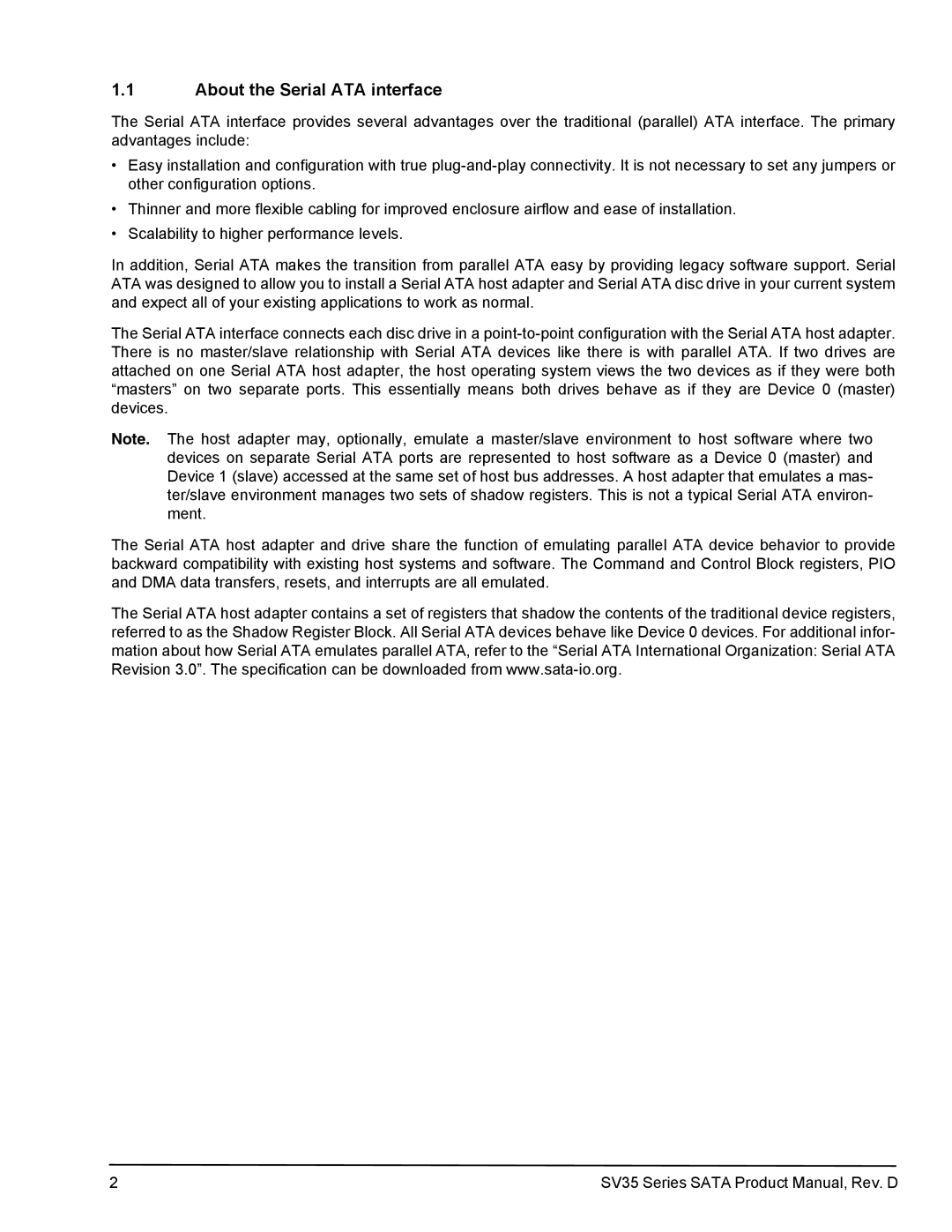ST3500411SV, ST31000526SV, ST2000VX002, ST31000525SV specifications
Seagate, a stalwart name in the data storage industry, offers a range of hard disk drives that cater to various needs and applications. Three notable models are the ST3250311SV, ST3500410SV, and ST31000525SV, each designed with unique characteristics and features suitable for diverse environments, from personal computing to enterprise storage solutions.The ST3250311SV is a 250GB SATA drive that operates at 7200 RPM, providing a solid balance of performance and capacity. One of its main features is its 8MB cache, which enhances read and write speeds, making it suitable for high-demand applications like gaming and multimedia. The drive is also designed with Seagate's advanced data protection technologies, including an intelligent error recovery system that serves to minimize data loss and increase reliability during operation.
Next in line, the ST3500410SV offers a larger capacity of 500GB, making it an excellent choice for users who require more storage. Like its counterpart, it operates at 7200 RPM but is equipped with a 16MB cache for even better performance. The drive is built on Seagate's perpendicular recording technology, which increases storage density and improves data integrity. The ST3500410SV is particularly well-suited for server environments, where reliability and speed are critical. Its advanced power management features help reduce energy consumption, making it a more eco-friendly option for data centers.
Finally, the ST31000525SV provides an impressive 1TB of storage capacity, leveraging the same 7200 RPM speed and 32MB cache as its predecessors. This model exemplifies Seagate's focus on enhancing user experiences with greater storage and quicker access times, fulfilling the demands of both consumer and enterprise markets. With features like S.M.A.R.T. (Self-Monitoring, Analysis, and Reporting Technology), this drive helps users keep tabs on their drive's health and performance, anticipating potential failures and ensuring data security.
In summary, the Seagate ST3250311SV, ST3500410SV, and ST31000525SV drives showcase a range of capacities and features aimed at meeting the needs of today’s data-driven world. From gaming and personal use to demanding enterprise applications, these hard drives combine speed, reliability, and advanced technologies to deliver outstanding performance and data protection. Their robust design and efficient power management reinforce Seagate's commitment to innovation and sustainability in data storage solutions.
